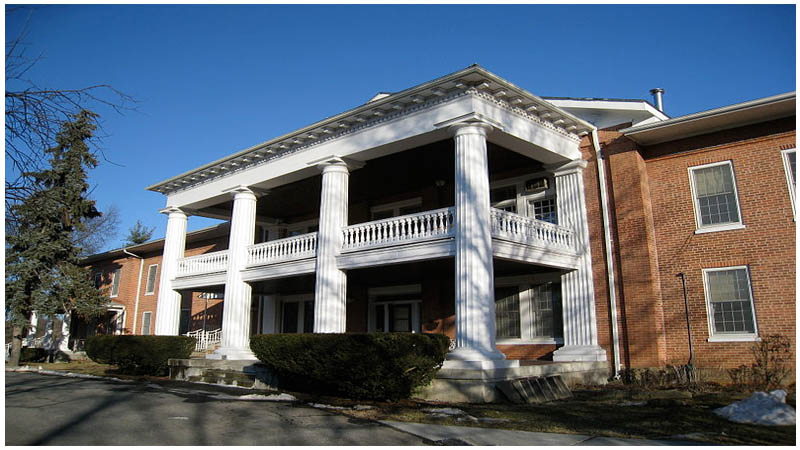Today housing the West Virginia Schools for the Deaf and Blind, the campus of Romney Classical Institute was purpose built in 1845-6 to accommodate the successful and rapidly growing collegiate prep school that had formerly been known as Romney Academy.
The roots of the school can be traced back to 1752, when “West Virginia’s Oldest Town” was still called Pearsall’s Flats. At first it shared a log hut with the town’s church, up until a new stone building was constructed for the school on North High Street after the town had been platted as Romney, in 1762. At some point it was given the name Romney Academy and was incorporated as such in 1814.
The accomplishments of Romney Academy were an indirect consequence of the revolutionary ideas of Charles F. Mercer. On February 8, 1817, Mercer proposed the first bill to introduce a centrally funded public school system which, although it fell flat, prompted the Virginia General Assembly to create a “Literary Fund” for the education of the poor.
Most school places were still subscription based but this was a definite step forward for equality in the education system.
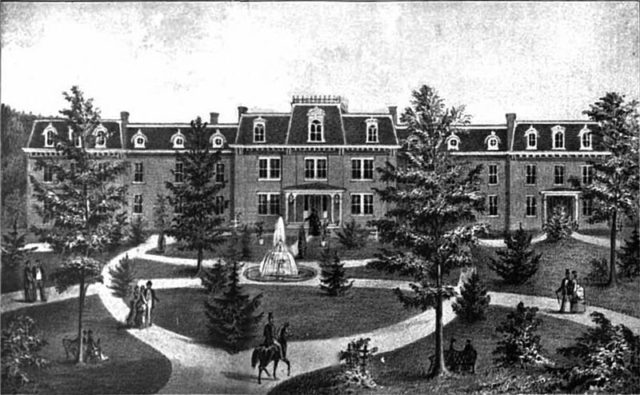
Romney Academy also benefited from the benevolence of the Romney Literary Society, which was established on January 30, 1819, as “The Polemic Society of Romney” by a group of ten local men.
They were dedicated to literature, science, and education. The society met two to four times a month to debate a wide range of topics.
When they started out the Polemic Society owned just two books, but as it was agreed “that after the running expenses of the society had been paid, the remaining funds [from the member’s 50 cents per month subscription] should be expended in buying books,” this number grew to around 3,000 in the 1830s. Sadly, most of the collection was lost during the Civil War.
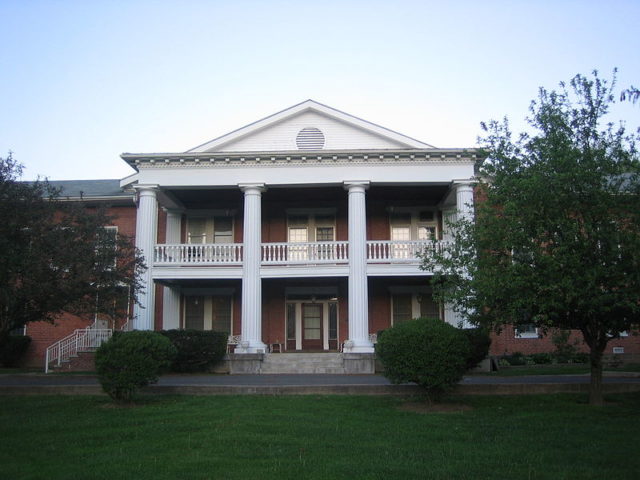
The debate subject for one of their earliest meetings, on February 19, 1819, was “Is education in a public school better than that of a private school?” Shortly after this, the Polemic Society of Romney took their first step of action on their conclusion — that public education is better — by introducing a program of classical studies at Romney Academy.
The academy thus became the first school of higher education in the region. It was only the beginning of a close relationship between the school and the literary society.
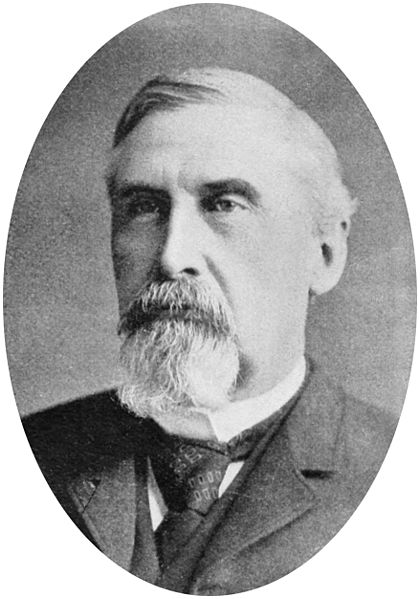
Some years later, in 1844, the Virginia General Assembly authorized the society to hold a lottery with the purpose of raising $20,000 for educational purposes.
Most of the funds raised by the lottery were invested in Romney Academy: as well as purchasing new books and providing direct financial support, the now-renamed Romney Literary Society had a new schoolhouse built on East Main Street.
The Act enabling them “to establish at or near the town of Romney, a seminary of learning for the instruction of youth in the various branches of science and literature,” and that the society could use as much of the property as they saw fit for their own purposes, was passed on December 13, 1846.
Purchase of the plot and construction of the 36 by 40 feet building cost around $8,000. Lessons were conducted on the first floor, and the upper floor was divided into two sections: one was used for society meetings and the other held their extensive library. Only society members, the principal, and the Romney clergymen were allowed access to library, and each had their own key.
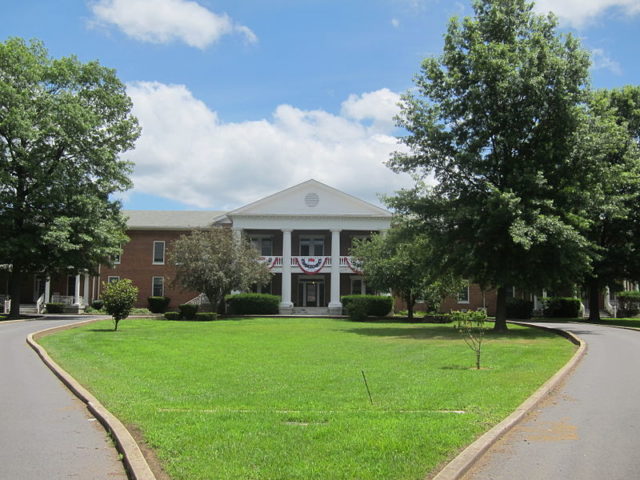
To reflect the joining of school and literary society, the educational established received the new name of Romney Classical Institute.
Interestingly, this was not the only school to stem from Romney Academy. A parochial school, the Potomac Seminary, was set up to rival Romney Classical Institute in 1950, by Presbyterian Reverend and historian Dr. William Henry Foote, after he fell out with the board the preceding year.
The upset was over changes to the Institute’s operating code. Ironically, he was the first person hold the office of Director of the Romney Classical Institute and was a former Principle of Romney Academy, from 1826 to 1838.
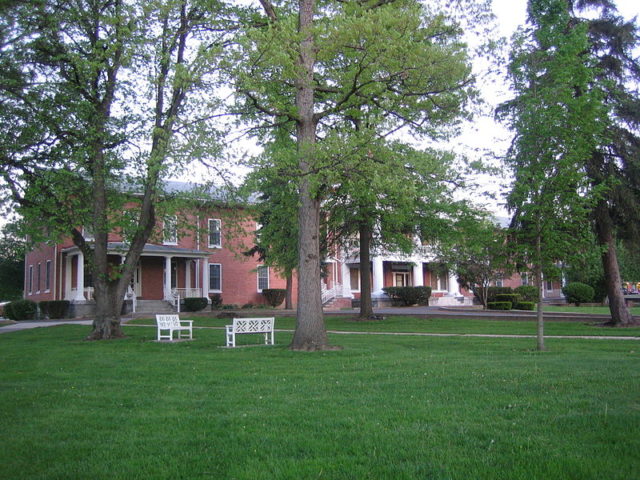
Subsequent directors included Professor E. J. Meany, who ran the school from 1849 to 1851, followed by Democratic politician and one of Meany’s assistant principals, John Jeremiah Jacob. Jacob was later elected as the first Democratic Governor of West Virginia. An advertisement for the first female teacher in the co-ed school was placed in the Baltimore Sun by principle William C. Clayton in 1853.
Whilst under the society’s leadership, the school created its own literary organization: the Phrena Kosmian Society.
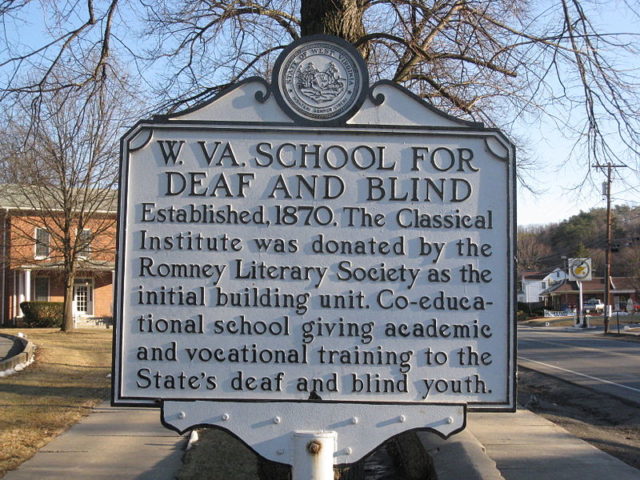
At the outbreak of the Civil War, Romney Classical Institute was under the care of Reverend Joseph Nelson. He was not only principle, but had purchased the school and its buildings from the Romney Literary Society in February 1861.
After the war, despite the despondency among those staff and members of the society who made it home from the battlefields, Nelson tried hard to resurrect his school. He advertised it in local newspapers as “A Male and Female Boarding and Day School” offering “a sound English, Classical and Mathematical Education.” Romney Classical Institute reopened in September 1865 — and closed after just a few semesters.
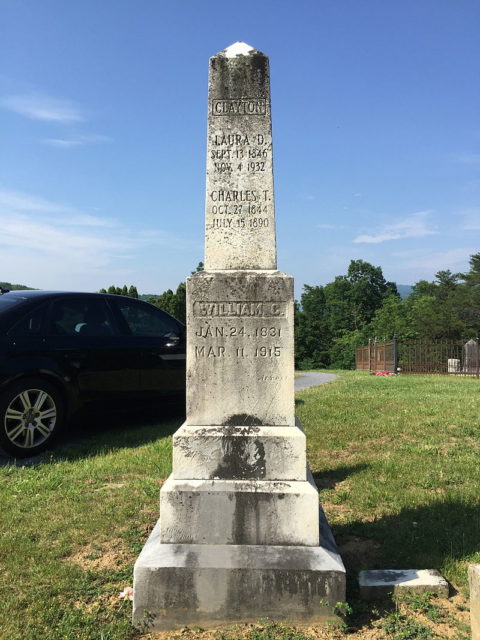
The building and grounds were returned to the hands of the now-reestablished Romney Literary Society. The 15 acre campus was given to the state of Virginia to be used to establish the West Virginia Schools for the Deaf and Blind, which opened on September 29, 1870. After handing over the school, the society erected Literary Hall at the corner of W. Main Street and N. High Street.
The schools started out with five deaf and five blind students; to date they have catered for more than 4,800 students, alongside a program of outreach resources and training.
The original architecture of the Romney Classical Institute has been well preserved. Two additional wings were added in 1872, and together these now form the the administration building. The West Virginia Schools for the Deaf and Blind campus today encompasses 79 acres.
